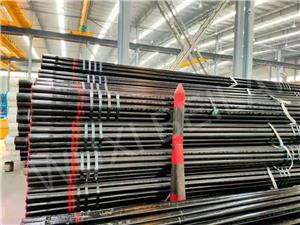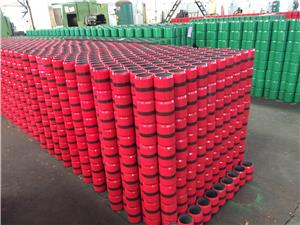What are the key processes of precision steel pipe manufacturing?
The key process of precision steel pipe manufacturing mainly includes the following steps:
1. Prepare raw materials
Material selection: The selection of high-quality carbon structural steel or alloy steel as raw materials, these materials need to undergo strict inspection to ensure that their chemical composition and physical properties meet the production requirements.
Pretreatment: The necessary cutting, heating and other pretreatment of raw materials to prepare for the subsequent process.
2. Hot rolling or cold drawing
Hot rolling: After the billet is heated to high temperature, it is rolled into a thicker steel pipe by the mill. This process requires strict control of parameters such as temperature, pressure and speed to ensure the initial size and performance of the steel pipe.
Cold drawing: at normal temperature, the steel pipe is drawn by the mold to make its diameter smaller and the wall thickness thinner. The dimensional accuracy and surface finish of steel pipe can be significantly improved by cold drawing process.
3. Annealing treatment
The purpose of annealing the steel pipe after rolling or cold drawing is to eliminate the internal stress generated in the process of steel pipe and improve its structure and properties. The annealing temperature and time need to be precisely controlled according to the material and specifications of the steel pipe.
4. Pickling and phosphating
Pickling: The annealed steel pipe needs to be pickled to remove the oxide and rust on its surface and ensure the cleanliness of the steel pipe surface.
Phosphating: A layer of phosphating film is formed on the surface of the steel pipe to provide good lubrication and anti-rust protection for subsequent processing and use.
5. Finishing rolling
The steel pipe is rolled several times by high-precision rolling mill to further improve its dimensional accuracy and surface finish to meet the high standard of precision steel pipe. Finishing rolling is the key link to improve the quality of steel pipe.
6. Inspection and packaging
Inspection: Comprehensive inspection of precision steel pipes, including size, shape, surface quality, mechanical properties, etc., to ensure compliance with relevant standards and customer requirements.
Packaging: Qualified steel pipes will be packaged to prevent damage during transportation and storage.
In addition, depending on the production method and specific needs, the manufacturing process of precision steel pipes may also include other key processes such as molding, welding, die, cold rolling (or cold drawing). The setting and execution of these processes need to be determined according to the specific conditions of the production line and the specific requirements of the product.




